Bones Better Than Diamonds
17:36 minutes
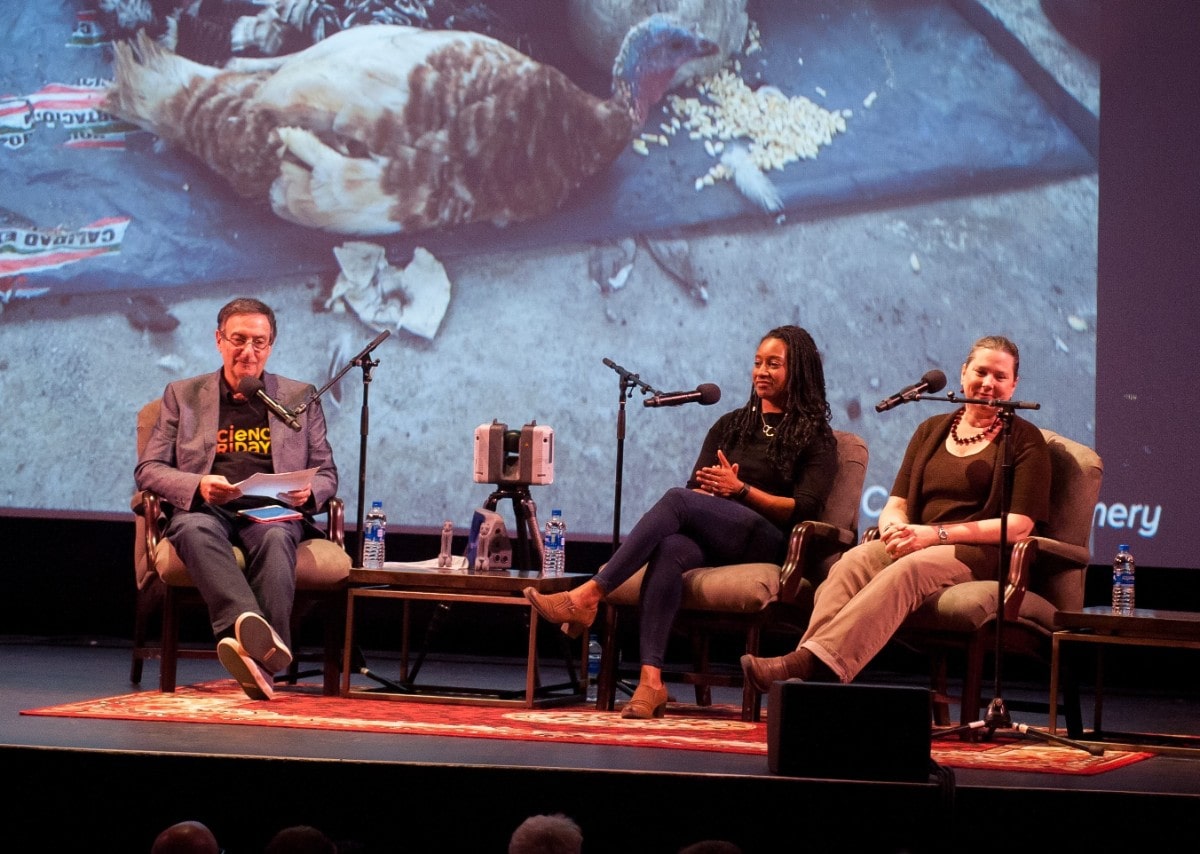
When archaeologists unearth past societies, the story of those people is written in human remains and artifacts. But it’s also written in environmental remains: bones of animals, preserved plants, and even the rocks around them.
In this interview, recorded live in Tampa, Florida, Kitty Emery and Nicole Cannarozzi, both environmental archaeologists at the Florida Museum, lead an onstage expedition through the earliest known domestication of turkeys in Guatemala and Mexico, the 4,000-year-old shell middens of indigenous people of coastal Southeast United States, and even sites that could tell us more about the African American diaspora and the lives of slaves mere hundreds of years ago. Plus, the two archaeologists tell us how understanding the environmental choices of past people can lead to better insight into ourselves.
Explore some of the archaeological treasures and sites from the field below.
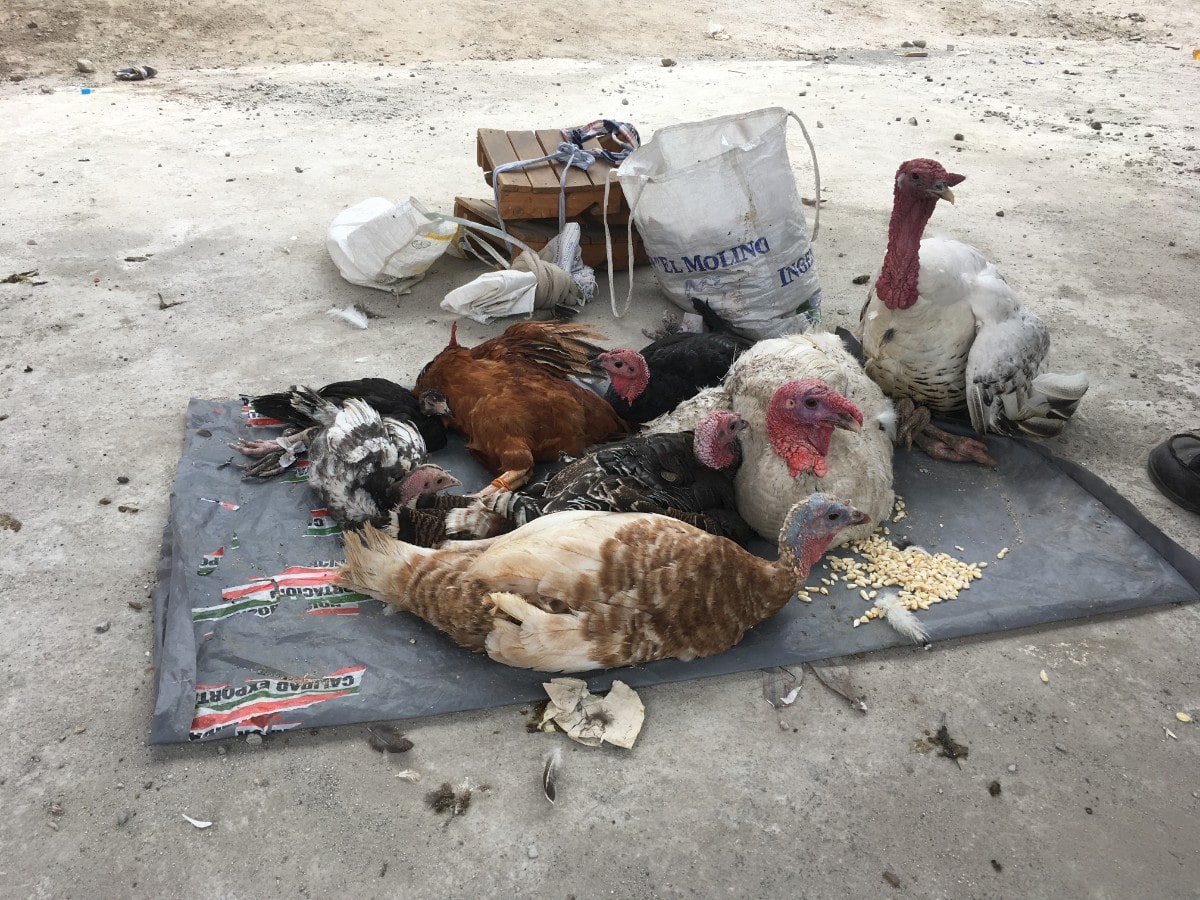
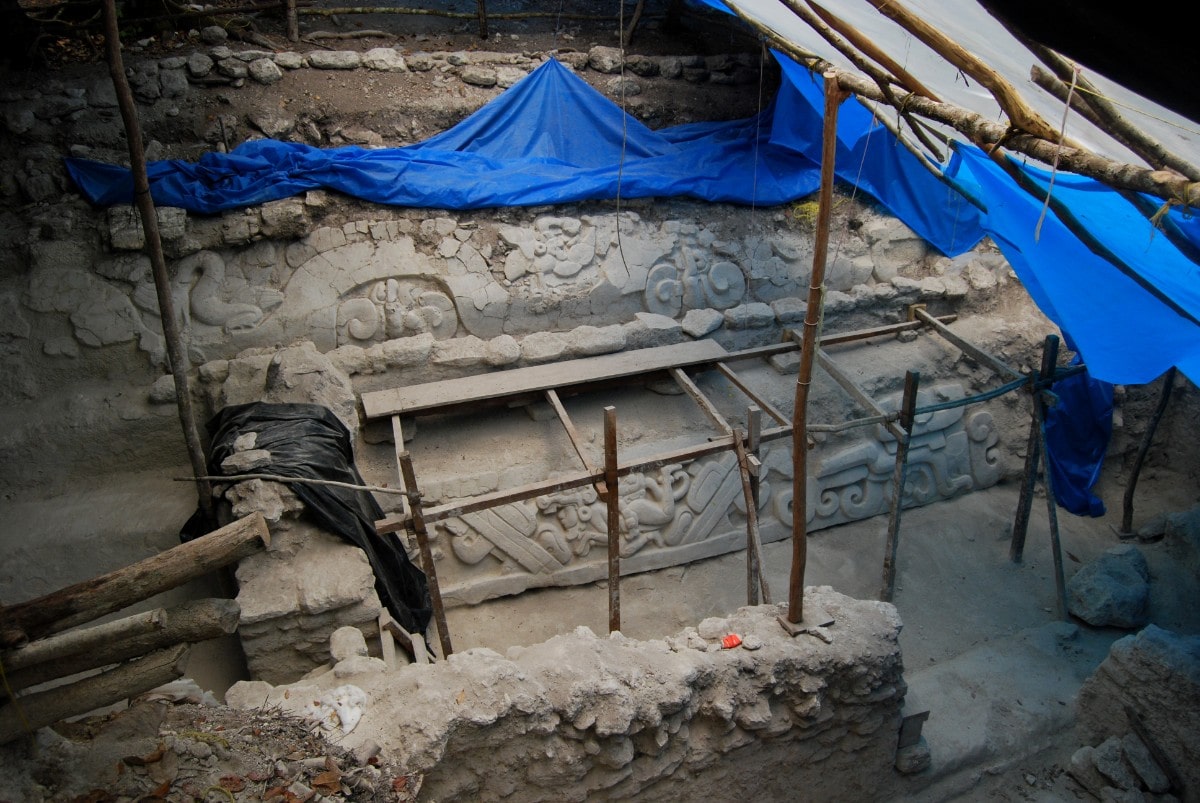
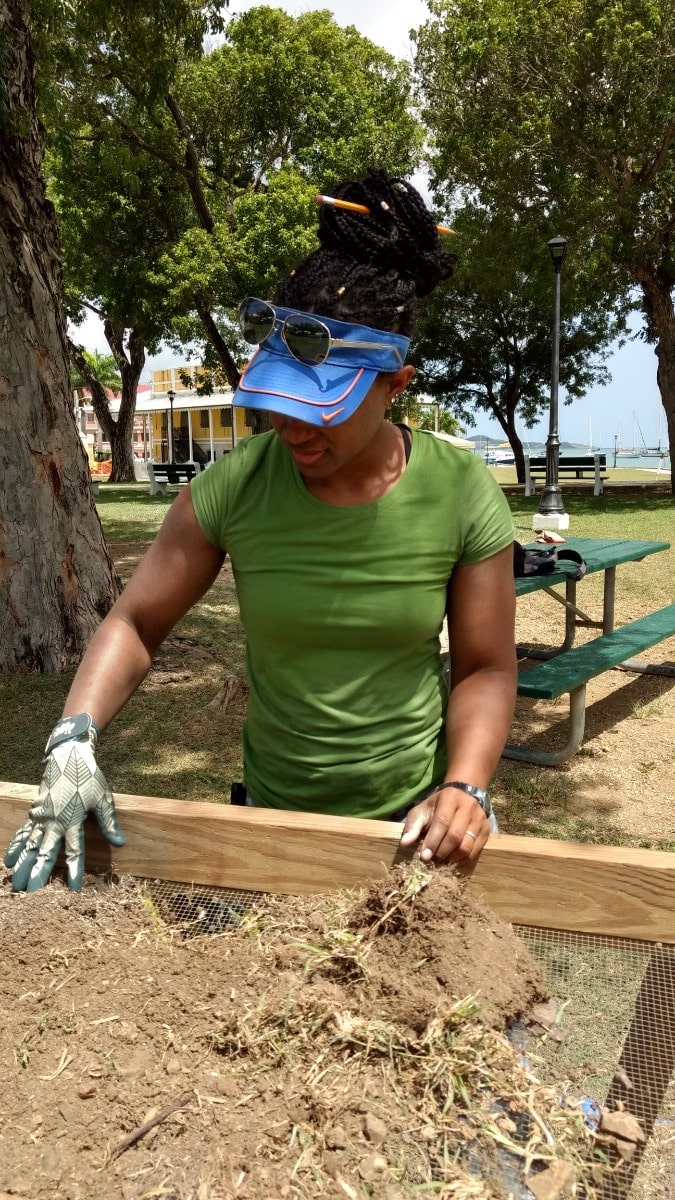
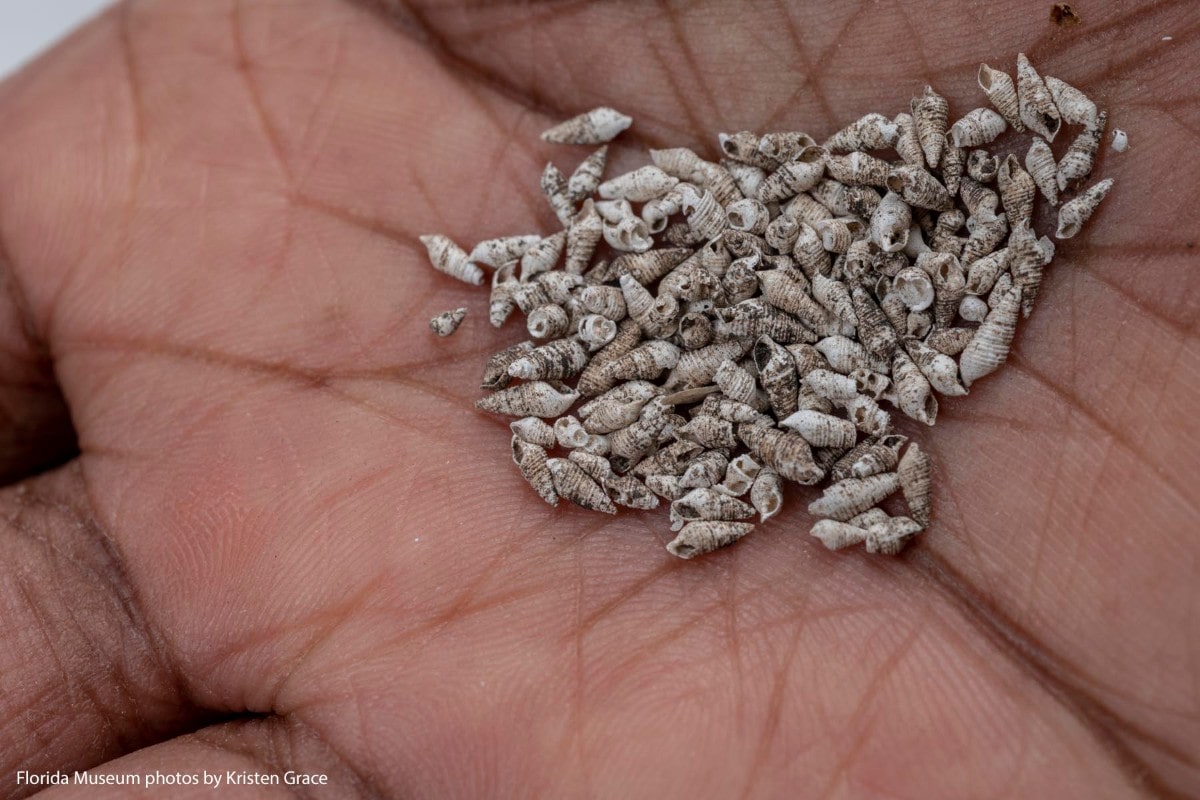
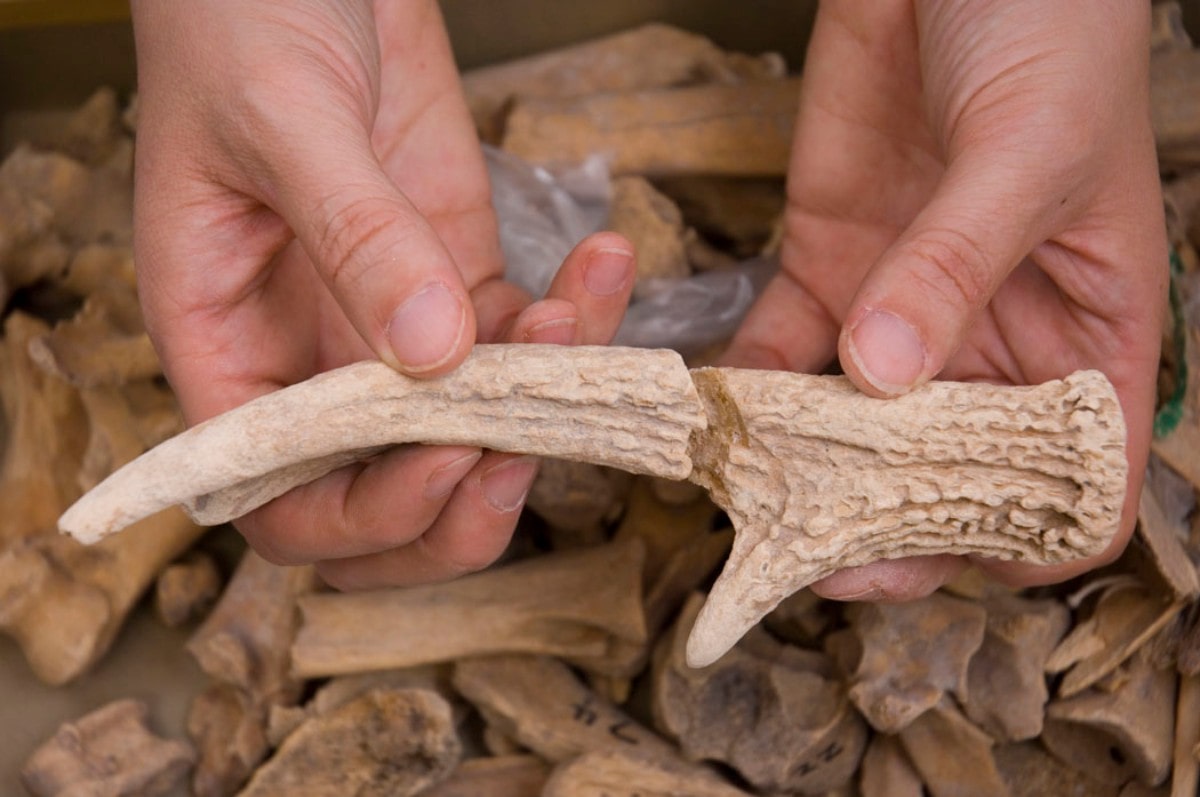
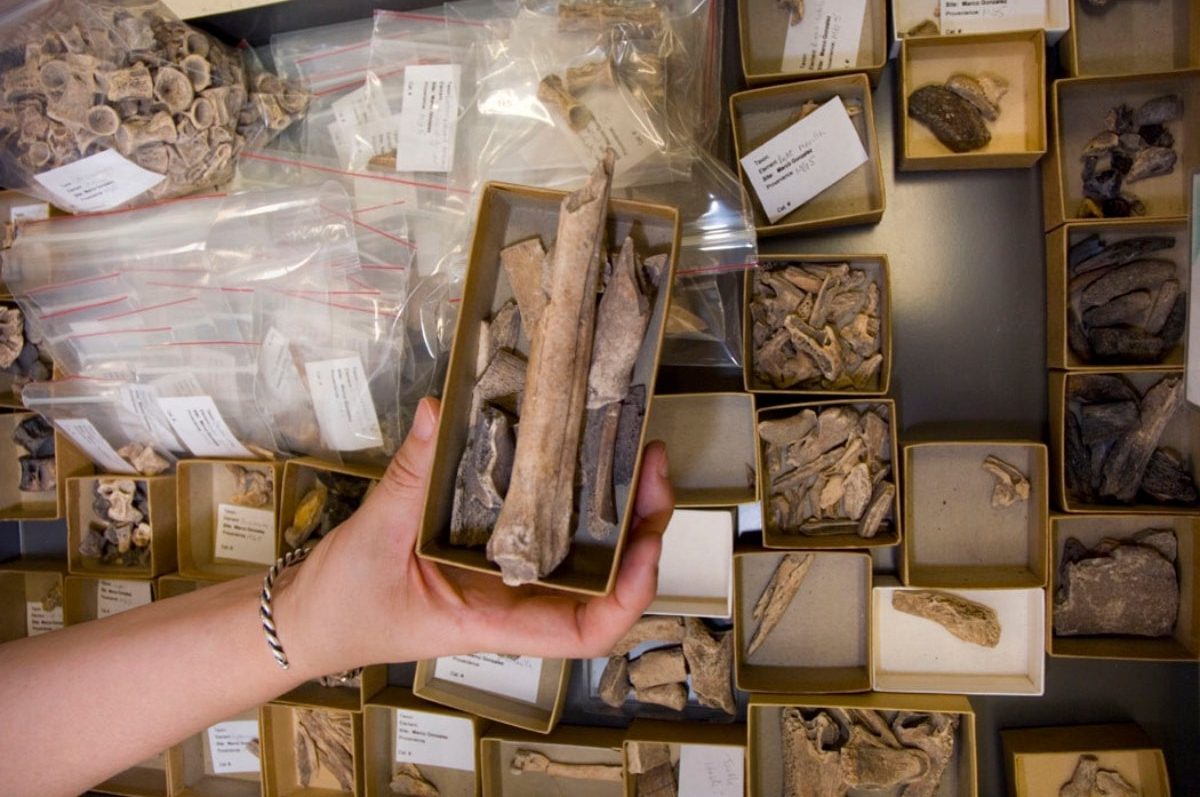
Kitty Emery is Associate Curator of Environmental Archaeology at the Florida Museum of Natural History, and an Affiliate Associate Professor of Anthropology at the University of Florida in Gainesville, Florida.
Nicole Cannarozzi is Collections Manager for Environmental Archaeology at the Florida Museum of Natural History, and a PhD candidate in Archaeology at the University of Florida in Gainesville, Florida.
IRA FLATOW: This is Science Friday. I’m Ira Flatow coming to you from the Tampa theater in Tampa, Florida.
[CHEERING]
Now I want you to picture an archaeologist, let’s say Indiana Jones, and he’s digging carefully through the remains of a destroyed civilization. He uncovers his prize, triumphantly he holds up a turkey bone. Not quite like in the movies. Not what you pictured.
Maybe you were hoping for an ancient statue or a tool or even a long dead queen. But for environmental archaeologists like my next guest, those turkey bones and plant remains, even oyster shells, are the treasures that tell the stories of past peoples.
Take the folks that lived 4,000 years ago on the coast of Georgia. How can we tell what their lives were like? Did they migrate up and down the coast depending on the season? Well, the answer may be in clues they left behind like shell fish, huge rings of which can be found on islands like St. Catherine’s, and half a continent away the Mayan people built a civilization in the rainforest of Guatemala. They left behind buildings and art and evidence of the earliest domestication of the turkey, thousands of years before our own Thanksgiving turkey. Yeah.
Here to tell the tales, two environmental archaeologists from the Florida Museum of Natural History in Gainesville Dr. Kitty Emery, associate curator. Welcome to Science Friday.
KITTY EMERY: Thank you, Ira.
[APPLAUSE]
IRA FLATOW: Nicole Cannarozzi, collections manager and a PhD candidate at the University of Florida. Welcome, Nicole,
NICOLE CANNAROZZI: Thank you.
[APPLAUSE]
IRA FLATOW: Kitty, do you have a hat and a whip like Indiana Jones?
KITTY EMERY: I do, but I was told not to bring them.
IRA FLATOW: And Nicole, tell us what kinds of treasures you were hunting as an environmental archaeologist.
NICOLE CANNAROZZI: Well, as environmental archaeologists one of the things we study is the human relationship with the environment and the past. So as archaeologists, we’re studying animal bones. And then other sub-fields in environmental archeology is archaeobotany. And archaeabotanists study the plant remains and archaea pedologists study soils and sediments.
IRA FLATOW: Now, Kitty, people may say, why aren’t you fixated on human remains? Why animals?
KITTY EMERY: Well, animals can tell you about the ancient environment, but also about people and their relationship to that environment. So if you just study humans you only have one species to look at. We get to look at all of the different species of animals.
And really the lessons that we can learn from how people reacted to their animals and the way they perceived those animals, the things that they thought of when they dealt with animals can tell us an awful lot about modern day and our own biodiversity problems that we have now. So you can learn a lot from the animal bones.
IRA FLATOW: And Nicole, your work focuses on the people I talked about that inhabited coastal Georgia. Did they have a name? Do we know who they were?
NICOLE CANNAROZZI: We don’t. So these sites were formed about 5,000 years ago, and they are called shell ring sites. Called so because they’re made up primarily of shell in these rings that you see with these central cleared plazas.
And so one of the things we’re trying to learn about these sites is how people use them, when they were living at the sites, what types of resources they were using at the sites. So that’s primarily what we’re looking at so far in these sites.
IRA FLATOW: Do we know why they have so many shells in these sites, what they use them for?
NICOLE CANNAROZZI: Well, some of the theories are that these were ceremonial sites. So they were people coming from all over to celebrate various ceremonies or coming to meet each other, and that they were the result of feasting events.
So they’re depositing all of these shells and bone and other artifacts into these sort of ring shaped sites, and then the cleared central plaza, which looks like they have been continually cleaned and maintained potentially for these ceremonies. There are other theories that say these are sites where people were just daily living and this is their general daily garbage that they’ve collected in sort of this circular shape.
IRA FLATOW: So you can learn a lot from the shells.
NICOLE CANNAROZZI: Yes, absolutely.
IRA FLATOW: Do they come in different sizes? Big ones, little shells.
NICOLE CANNAROZZI: The shells or the shell rings? Yeah, the shells themselves, yes, come in all different kinds of sizes. So the example up here is a very teeny tiny gastropod that’s no bigger than about six millimeters that are actually found in these shell ring sites and they come in with the oysters, which are the primary component of these sites.
IRA FLATOW: If you would like to ask a question don’t be afraid to step up to the microphone. It’s on the side here. We’re not taking questions from home, but we are taking questions from here in the audience and the aisles and up in our balcony. And just in time for Thanksgiving, Kitty, you’ve got a story about turkeys in Guatemala.
KITTY EMERY: I do.
IRA FLATOW: The Maya might have domesticated turkeys in Guatemala?
KITTY EMERY: They might have. There could be some arguments from the Mexicans about that.
IRA FLATOW: How do turkeys get to Guatemala? Are they native birds to the area?
KITTY EMERY: Well, one species is. So the turkeys, really, it’s an amazing story. And kind of one of the biggest puzzles about turkeys is why they were domesticated in the first place. And the clue actually is in how beautiful these birds are.
So when you guys are looking at your turkeys on your table you’re thinking about having them domesticated for the meat. But what we’ve discovered is that in fact they likely were not domesticated just for food. The cool thing about the turkey is that it was domesticated in Mexico or in that area, and that one domestication event is what led to all the turkeys around the world.
And when the Spanish arrived they were so intrigued by this turkey, the first thing they took back with them was the turkey. And within a couple of decades the Spanish turkey, which was also called the Aztec turkey at that time, was passed all around Europe. And so the Europeans loved it as well, and everybody had this turkey.
They all started breeding different breeds of the turkey, and then when the Europeans came back to North America they brought that turkey back with them. So then that turkey ended up being the turkey that we have the many breeds of now here.
IRA FLATOW: Who would have thunk this?
KITTY EMERY: It’s such a beautiful bird.
IRA FLATOW: Yeah. I mean, we just take it for granted. We did it, but we didn’t do it.
KITTY EMERY: No, we did not. It was 2,000 years ago that this bird was domesticated.
IRA FLATOW: Wow. Let’s go to the floor question. Yeah. You have a question? Step up to the mic there and ask a question.
AUDIENCE: OK. So wow, that’s weird.
IRA FLATOW: Go ahead. No, we can hear you.
AUDIENCE: So if you like animals so much, wouldn’t you like a $2,000 diamond, or do you like animal bones more?
KITTY EMERY: I like animal bones more than a $2,000 diamond. But that’s a great question because the information that we can get from doing science, I think all scientists would say that the knowledge we get from doing this work is way more valuable than sort of the material things that you might think of.
[APPLAUSE]
IRA FLATOW: Where else would you have learned about the turkey this holiday season, about the truth about the turkey? Yes?
AUDIENCE: What led you to become an environmental archaeologists?
NICOLE CANNAROZZI: Well, actually as an undergraduate, I was pre-vet. So I thought I wanted to work with live animals, and then I started taking anthropology classes and started learning more about history. And so the next step I took was interning at the Florida Museum and I started out washing artifacts in historical archeology.
And while doing that I found an animal bone. It was a really big bone. And so I took it to who was the collection manager at the time and asked him what it was, and he told me it was part of a manatee skull. And so then I was like, this is where it’s at. So I stopped washing artifacts and I started working in environmental archeology.
IRA FLATOW: Never know where that road is going. Life is a journey. Let’s go over here. Yes?
AUDIENCE: How do you get information itself? How do you get the–
IRA FLATOW: It’s OK. Take your time.
AUDIENCE: I forgot how to explain it.
IRA FLATOW: How do you collect the information?
KITTY EMERY: Yeah. Yeah, it’s an excellent question. And so one of the first things we have to do is identify the bone. And it’s really fun because it’s like a puzzle. So we have to compare the archaeological bone to modern bones of all the different kinds of animals and then we can decide what the species was.
But we then also need to know what age the animal was. And we have a bunch of different techniques we can use for that. We also want to know what sex it was. And so we can study that, but then we can also look at it and try to understand whether it had diseases because pathology show up on the bones.
And we can also learn whether people use that animal bone for other purposes by looking at the marks on the bone to see whether they tried to carve it into something or whether they used it– there’s a bunch of different techniques we have to use to get all that information together.
IRA FLATOW: That’s interesting. And Nicole, you also have a project on the island of St. Croix. What are you doing over there?
NICOLE CANNAROZZI: Yeah. So that is a project that we’re working on in collaboration with the National Park Service Southeast Archaeological Center, and that work is looking at slave life at a Danish military fort. So this fort was built back in 1733 and the slaves that lived in the compound were actually royal slaves in the sense that they serve the Danish military.
So sort of within slave social hierarchy, they occupied sort of a higher position. What we’re looking at there is trying to understand what slave life was like in that context, where they’re living sort of in close proximity to these Danish soldiers.
IRA FLATOW: We have a shell button back there. Tell us why that’s significant.
NICOLE CANNAROZZI: Well, I think it’s just pretty cool. So it’s actually–
IRA FLATOW: Works for me.
NICOLE CANNAROZZI: Actually it’s handcrafted from a shell called a West Indian Top Shell. And we can tell that because it has that shiny surface. And so many times some of these artifacts we’ll find they’ll have designs on them that may mean something or we can sort of look at maybe what they were using these for. So one of the reasons I think this is cool is because it has five holes that are drilled into it.
IRA FLATOW: What’s interesting also about this is this is not an ancient something. I mean, this is not thousands of years old. This is just hundreds of years old. You deal with that also.
NICOLE CANNAROZZI: Yeah. So historical archeology is another sub-field of archeology where we study people who have left oral and documentary histories. So there’s also things that we have to discover about people where we may think, oh, we have a historical record of this, so we know all of this. And that’s not always the case. There are still hidden puzzles in the archeology.
IRA FLATOW: I’m Ira Flatow. This is Science Friday from WNYC Studios talking about environmental archeology. Let’s go to the question on the side. Yes?
AUDIENCE: How long does it take to get the appropriate schooling to do what you do?
IRA FLATOW: Yeah. How much schooling do you need?
KITTY EMERY: Too much.
NICOLE CANNAROZZI: Quite awhile.
IRA FLATOW: More than a couple of weeks?
NICOLE CANNAROZZI: Way more than a couple of weeks. A good number of years. And so it depends too on what you want to do. So if if you want to get your PhD like I’m doing it’ll take you a little bit longer. But if you have a good advisor that inches you along, you’ll get there.
IRA FLATOW: So Nicole, as we wrap up, tell us, I know a lot of youngsters here, what do you get out of understanding the animal relationships that people have in the past? Why do you study it?
NICOLE CANNAROZZI: Well, animals are pretty important for us. So we have pets. They form a large part of our life, their foods. So a lot of things we study are really just to understand how people lived in the past and then use that also to think about ourselves now, and then how we can deal with certain situations in the future.
So not only are we just looking at animal bones and environmental remains, we’re also looking to answer these broader questions about how people lived in the past.
IRA FLATOW: And Kitty, can we apply any of what we learned about the past to how we’re living today?
KITTY EMERY: Absolutely. So one of the things that we study is, as I mentioned earlier on, the perceptions that people have of their environment and how they use their environment. So a lot of our researches is based on trying to understand what makes people make the decisions that they do. Why do people decide to use an environment sustainably? Why do they decide to overhunt or not overhunt?
So in one of my studies I was able to show that the Maya people were not generally overhunting their animals. They knew how many animals they should hunt. But when you looked at the hunting practices right close to sites that were very politically active, those were the places where they were overhunting their animals, which leads us to suggest that in fact although people who are living on the land know what they should do sustainably to maintain their animals or their environment.
The more that there’s a political pressure to pay your taxes or to give extras to the kings or the nobles, you start to make poor decisions. And that’s a really important lesson for today–
IRA FLATOW: I’ll say.
KITTY EMERY: –that we’re actually getting out of the past.
[APPLAUSE]
IRA FLATOW: Can’t think of a better way to end this conversation because as they say, the rest is history. Thank you for taking the time to be with us today. My guests environmental archaeologists at the Florida Museum of Natural History in Gainesville, Dr. Kitty Emery, associate curator, thank you; Nicole Cannarozzi, collections manager and PhD candidate at the University of Florida, thank you for enriching us.
NICOLE CANNAROZZI: Thank you.
[APPLAUSE]
IRA FLATOW: That’s about all the time we have. Our heartfelt thanks to Leslie Laney, Chris Sampson, Craig George, Sheila Roo, Scott Kaughmann and Scott Nolan, and all the great folks at WUSF for hosting us. Thank you all.
[CHEERING]
IRA FLATOW: And thanks also to Lloyd Pearson, Kathy France, and all the amazing staff here at the Tampa Theater for making this wonderful evening possible, and special thanks to Elizabeth Moore, and thanks to all our Science Friday staff.
Takes a lot of people behind the scenes to run this ship and to make me look sort of good. And they’re terrific at what they do. And thank most of all to you, our fans for coming out this evening. You have been a great crowd.
[CHEERING]
IRA FLATOW: Oh, let’s give one last round of applause for the jackets who are going to be playing us out tonight. Thank you for coming. In Tampa, Florida, I’m Ira Flatow. Drive safely, and good night.
[JAZZ MUSIC PLAYING]
Copyright © 2018 Science Friday Initiative. All rights reserved. Science Friday transcripts are produced on a tight deadline by 3Play Media. Fidelity to the original aired/published audio or video file might vary, and text might be updated or amended in the future. For the authoritative record of Science Friday’s programming, please visit the original aired/published recording. For terms of use and more information, visit our policies pages at http://www.sciencefriday.com/about/policies/
Christie Taylor was a producer for Science Friday. Her days involved diligent research, too many phone calls for an introvert, and asking scientists if they have any audio of that narwhal heartbeat.
Christopher Intagliata was Science Friday’s senior producer. He once served as a prop in an optical illusion and speaks passable Ira Flatowese.